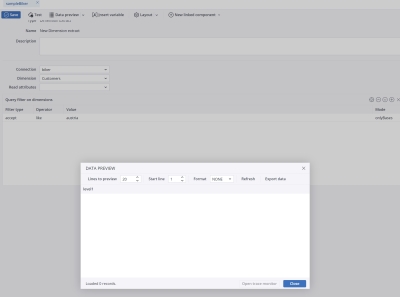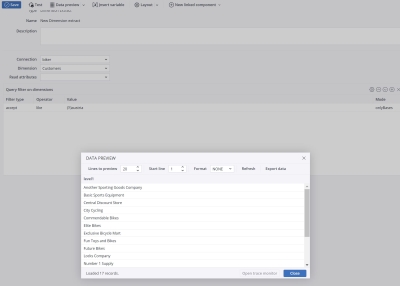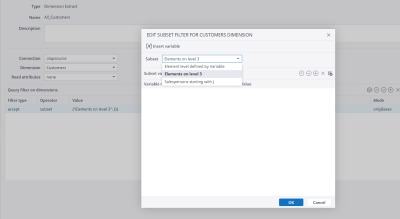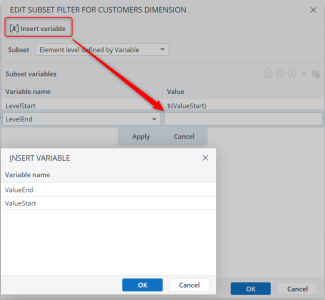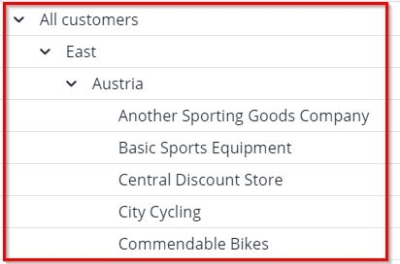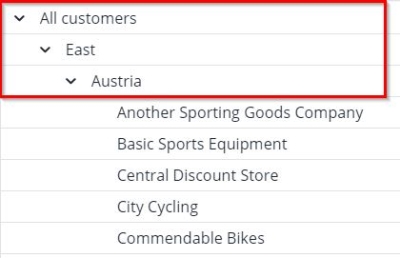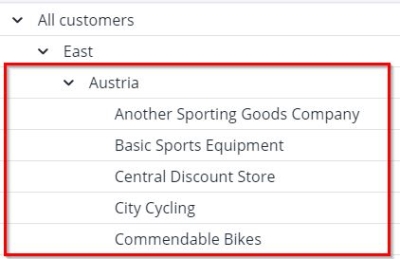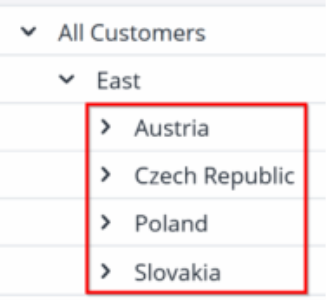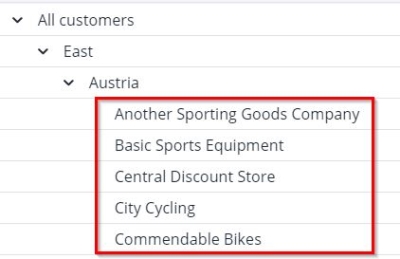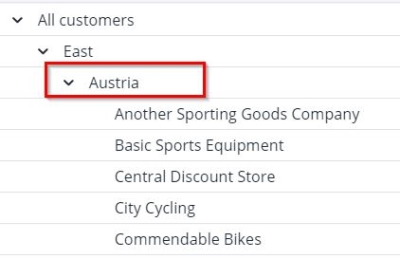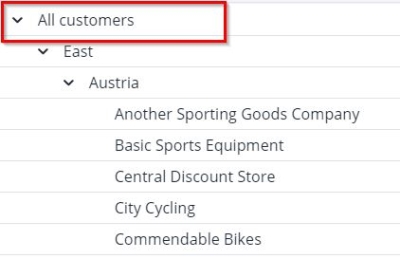A dimension can be extracted from a Jedox In-Memory DB (OLAP) database using the dimension extract. The extract creates a tree.
Dimensions can be filtered for the following items:
- Elements
- Consolidations (i.e., hierarchical relations between elements)
- Consolidation factors
- Element types (numeric / string)
- Attributes
- Formats and styles for dimension elements
Settings
| Connection | Connection to Jedox In-Memory DB | ||||||||||
| Dimension | A dimension from the selected database | ||||||||||
| Read attributes |
|
Query Filter on Dimensions
A query filter on the dimension allows filtering according to the name of elements and the hierarchy. The values are filled dynamically, depending on the selected filter type (1), operator (2), and mode (3). These filtering options are described below.
1. Filter type options
| accept | All nodes that fulfill the filter criteria are included in the selection. |
| deny | All nodes that fulfill the filter criteria are excluded from the selection. |
2. Operator options
The values for each expression depend on the operator used; specific values are noted when necessary in the descriptions below.
| equal | Filtering occurs according to the element specified. This operator is not case-sensitive. Example: Austria |
| inAlphaRange | Alphanumerical values in a particular range are filtered. Example: [A100,D200]. The short GIF below shows how this functionality works with dates. |
| inRange | Numerical values in a particular range are filtered. Example: [1000,2000] |
| isEmpty | Empty values (blank, space, or multiple space values) are filtered. The Value field should be left blank. |
| like | Filters the dimension elements according to regular expressions. This operator is case-sensitive. You can change that by using the (?i) modifier at the start of a regular expression.
After using the regular expression, the data preview must look like in the example below: |
| subset | Filters the dimension elements based on any stored global Subsets for the dimension. The extract can filter from Subsets with one or more defined filter criteria or variables:
Filtering from a stored Subset Select the stored Subset from the "Edit Subset" dialog: If the Subset uses variables, you must select them manually by adding as many rows as there are defined variables within the "Edit Subset" dialog. Filtering with an Integrator variable For more dynamic design, you can replace the value of the Subset variable with an Integrator variable, as shown in the screenshot below: Note: the value " has to be escaped as \" |
3. Mode options
Defines a hierarchical filter for the dimension. If not set, the default mode "onlyNodes" is applied, returning only the filtered elements independently of the hierarchy. In case of a global Subset filter, a mode is in general not reasonable.
Example of Query Filter on Dimensions:
| Filter Type | Operator | Value | Mode |
| accept | equal | Austria | onlyBases |
Updated November 6, 2024





